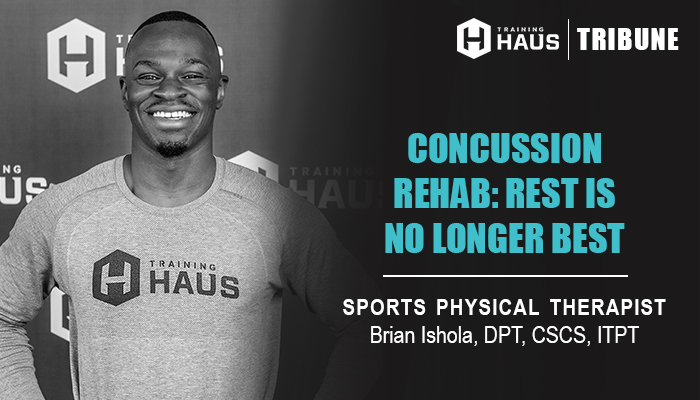
Concussion Rehab: Rest is No Longer Best
If you’re a high school athlete playing a contact sport, chances are you know someone who has sustained a concussion or you may have even experienced one yourself.
In 2017, the CDC reported that 15% of high school students reported having at least one concussion related to sports or physical activity, and 6% reported having two or more.
So, what is a concussion?
A concussion is a brain injury that occurs when the brain is violently shaken. The injury can happen during rapid movement changes (such as whiplash) or when the head is directly hit. This shaking or hitting of the head causes unpredictable injury to any area of the brain, resulting in immediate or delayed changes in the brain’s chemistry and function. Surprisingly, less than 10% of concussions involve a loss of consciousness.
Symptoms of concussions include, but are not limited to: headaches, neck pain, dizziness, sensitivity to light/sound, “fogginess,” irritability, and more. Proper diagnosis and treatment are critical to returning to 100%.
The Shift – Concussion Management
Guidelines published up to 2013 recommended that all athletes with a sports-related concussion be managed with strict physical and cognitive rest until all symptoms resolved. In the last five years, the paradigm in concussion rehab has shifted.
Following a concussion, a brief period of complete rest may be needed (24-48 hours). Afterward, an athlete’s “rest” should be avoiding any activities that make their symptoms exacerbated or worse.
There’s no need to shut down activities that do not make your symptoms worse. So, if one can tolerate watching TikTok for 1 hour without symptoms, go ahead. If you’re able to go for a light walk outside without any symptoms, even better!
How Rehab Can Help
Because concussions vary tremendously between people, a physical therapist will evaluate an individual to specialize their treatment. Below are some ways physical therapists can do so:
Aerobic Exercise
Physical therapists and athletic trainers can perform a graded exercise test on a treadmill to determine what heart rate patients can exercise at without increasing their symptoms. This exertion test helps develop a specific aerobic exercise program.
After as little as three days of bed rest, regularly exercising endurance athletes have been found to exhibit reductions in peak exercise performance. So, compared to complete rest after a concussion, we now know that submaximal exercise and relative rest can accelerate symptom resolution and reduce the incidence of a delayed recovery following a concussion.
Balance/Dizziness
Balance/dizziness is very common after a concussion. Concussions affect the vestibular system which can lead to symptoms of: vertigo, dizziness, disequilibrium, and vision issues. Physical therapists and athletic trainers specialized in concussion rehab will prescribe targeted exercises and strategies to improve the vestibular system and reduce symptoms.
Neck Rehab
Often after a concussion, patients will have pain or limited mobility in their neck. In addition, a patient’s muscles will spasm or tense up as a way to protect the neck. Physical therapists and athletic trainers utilize manual therapy techniques and directed exercises to help improve neck mobility and pain.
Bottom Line
If you sustain a concussion, get seen as soon as possible by a medical provider to determine your treatment plan going forward. Simply relying on rest is no longer best!
- McCrory P, Meeuwisse WH, Aubry M, Cantu B, Dvorak J, Echemendia RJ, et al. Consensus statement on concussion in sport: the 4th international conference on concussion in sport held in Zurich, November 2012. Br J Sports Med.(2013)
- Harmon KG, Drezner JA, Gammons M, Guskiewicz KM, Halstead M, Herring SA, et al. American medical society for sports medicine position statement: concussion in sport. Br J Sports Med.(2013)
- Broglio SP, Cantu RC, Gioia GA, Guskiewicz KM, Kutcher J, Palm M, et al. National athletic trainers’ association position statement: management of sport concussion.
- Lal A, Kolakowsky-Hayner SA, Ghajar J, Balamane M. The Effect of Physical Exercise After a Concussion: A Systematic Review and Meta-analysis. Am J Sports Med. 2018 Mar;46(3):743-752. doi: 10.1177/0363546517706137. Epub 2017 Jun 1. PMID: 28570092.
- Leddy JJ, Haider MN, Ellis MJ, Mannix R, Darling SR, Freitas MS, Suffoletto HN, Leiter J, Cordingley DM, Willer B. Early Subthreshold Aerobic Exercise for Sport-Related Concussion: A Randomized Clinical Trial. JAMA Pediatr. 2019 Apr 1;173(4):319-325. doi: 10.1001/jamapediatrics.2018.4397. PMID: 30715132; PMCID: PMC6450274.
- Leddy JJ, Haider MN, Hinds AL, Darling S, Willer BS. A Preliminary Study of the Effect of Early Aerobic Exercise Treatment for Sport-Related Concussion in Males. Clin J Sport Med. 2019 Sep;29(5):353-360. doi: 10.1097/JSM.0000000000000663. PMID: 30239422; PMCID: PMC6424660.
- DePadilla L, Miller GF, Jones SE, Peterson AB, Breiding MJ. Self-Reported Concussions from Playing a Sport or Being Physically Active Among High School Students — United States, 2017. MMWR Morb Mortal Wkly Rep 2018;67:682–685. DOI: http://dx.doi.org/10.15585/mmwr.mm6724a3
- Smorawiński J, Nazar K, Kaciuba-Uscilko H, Kamińska E, Cybulski G, Kodrzycka A, Bicz B, Greenleaf JE. Effects of 3-day bed rest on physiological responses to graded exercise in athletes and sedentary men. J Appl Physiol (1985). 2001 Jul;91(1):249-57. doi: 10.1152/jappl.2001.91.1.249. PMID: 11408437.
- https://www.choosept.com/guide/physical-therapy-guide-concussion

